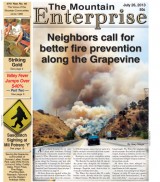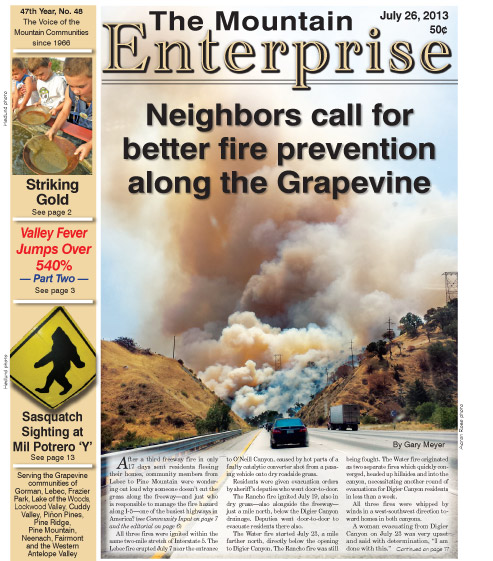Last week: Coccidioidomycosis, typically referred to as “cocci,” is the fancy name for the fungal spore that causes Valley Fever. It lies dormant in dry soil until disturbed. Then it is carried on blowing dust. When it is inhaled, Valley Fever infection can result. L.A. County Department of Public Health Epidemiologist Ramon Guevara began showing his slides, and there was an audible gasp. His graphs and data document a 545% increase in the number of Valley Fever cases in the Western Antelope Valley between 2000 and 2011.
By Patric Hedlund
The arid conditions of the Antelope Valley create one of the unique environments in the southwest U.S. where “cocci” is endemic, along with parts of Kern County and the high deserts of Arizona.
It is not transmitted by “person to person” contact. Most cases are contracted by inhalation of dust-borne fungal spores, although a few cases related to organ transplants or puncture wounds by a contaminated object have been documented. Animals and pets get Valley Fever too.
L. A. County Epidemiologist Ramon Guevara told a town hall audience on July 15 that soil disturbances such as dust storms in strong winds, earthquakes, agricultural plowing, archeological digs and construction activity are associated with the current spike in Valley Fever cases. He has drafted a study correlating construction activity and an increase in the illness in L.A. County. Western Antelope Valley residents point to the failure of solar facilities to contain blowing dust effectively.
On July 24 Congressman Kevin McCarthy launched a bipartisan Congressional Valley Fever Task Force to mobilize medical and scientific sectors to search for a vaccine for prevention and tests to diagnose the illness. Misdiagnosis occurs frequently.
Next Week: Symptoms and Treatment of Valley Fever
This is part of the July 26, 2013 online edition of The Mountain Enterprise.
Have an opinion on this matter? We'd like to hear from you.


